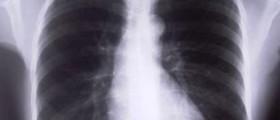Phlegm is the name for the thick and sticky mucus produced by the mucus membrane, which is a part of the respiratory system. Mucus is very important since it has several roles, but excessive production of mucus and the creation of phlegm can be quite an annoying condition.
Cilia are projections that resemble hair and that push the phlegm from the mucus membrane into the throat. When this phlegm is clear, it is not problematic and it serves to protect the organism from various pathogens or foreign particles that enter the body through the mouth or nose. On the other side, excessive yellow or green phlegm usually indicates that there is a health problem.
- Using the bacterium Pseudomonas aeruginosa and a three-dimensional (3D) laboratory model of native mucus, we determined that exposure to mucus triggers downregulation of virulence genes that are involved in quorum sensing, siderophore biosynthesis and toxin secretion, and rapidly disintegrates biofilms - a hallmark of mucosal infections.
- This phenotypic switch is triggered by mucins, which are polymers that are densely grafted with O-linked glycans that form the 3D scaffold inside mucus. Here, we show that isolated mucins act at various scales, suppressing distinct virulence pathways, promoting a planktonic lifestyle, reducing cytotoxicity to human epithelia in vitro and attenuating infection in a porcine burn model.
- Other viscous polymer solutions lack the same effect, indicating that the regulatory function of mucin does not result from its polymeric structure alone. We identify that interactions with P. aeruginosa are mediated by mucin-associated glycans (mucin glycans). By isolating glycans from the mucin backbone, we assessed the collective activity of hundreds of complex structures in solution. Similar to their grafted counterparts, free mucin glycans potently regulate bacterial phenotypes even at relatively low concentrations.
Causes of Phlegm in the Throat
Phlegm in the throat may appear only at night in some people. On the other hand, there are also people who have a problem with phlegm in the morning only. When it appears in the throat, it usually represents a symptom of a certain acute or chronic respiratory disorder. In most cases, phlegm in the throat occurs due to allergies and some viral infections like the flu and the common cold.
Many people are allergic to certain substances or irritants, such as dust, for example. When it reaches the throat, the production of mucus is triggered in order to fight the foreign particles. Apart from phlegm, this excessive production of mucus also provokes inflammation or swelling, which constricts the airways. It is very serious when the phlegm gets to the lung and obstructs the airways there.
Many infections of the lower respiratory system, such as acute bronchitis, influenza, and pneumonia, as well as tonsillitis, laryngitis, and pharyngitis, are also considered to be the causes of phlegm in the throat. Postnasal drip is a condition that is also responsible for the appearance of thick and sticky mucus in the throat, especially in people who get phlegm in the throat in the morning. The mucus formed in the back of the nasal cavity accumulates in the throat during the night.
Excessive smoking can also be a reason for the occurrence of phlegm in the throat. It usually leads to the inflammation of the throat, which further causes phlegm in the throat. Tuberculosis and lung cancer are two serious medical conditions, which also trigger the excessive production of mucus and its appearance in the throat.


















Your thoughts on this
Loading...